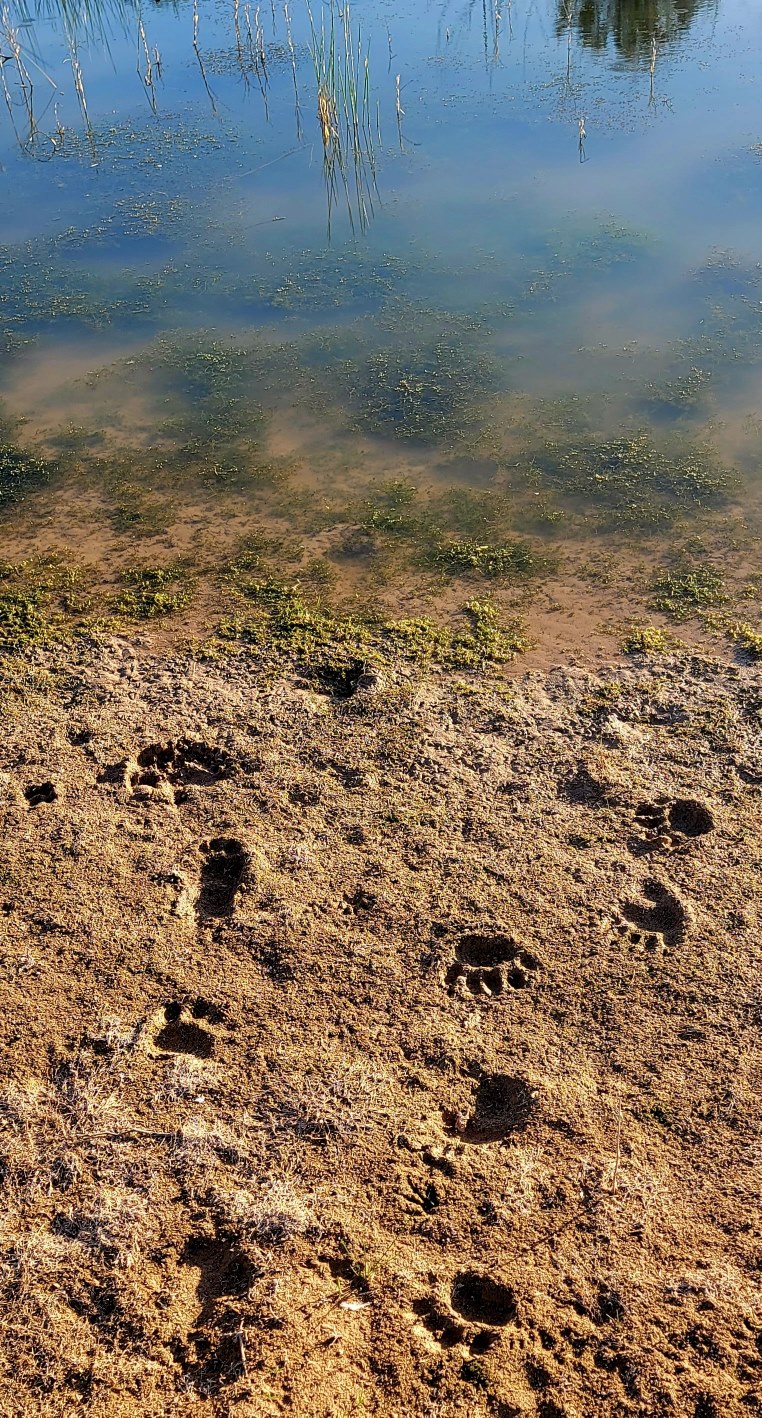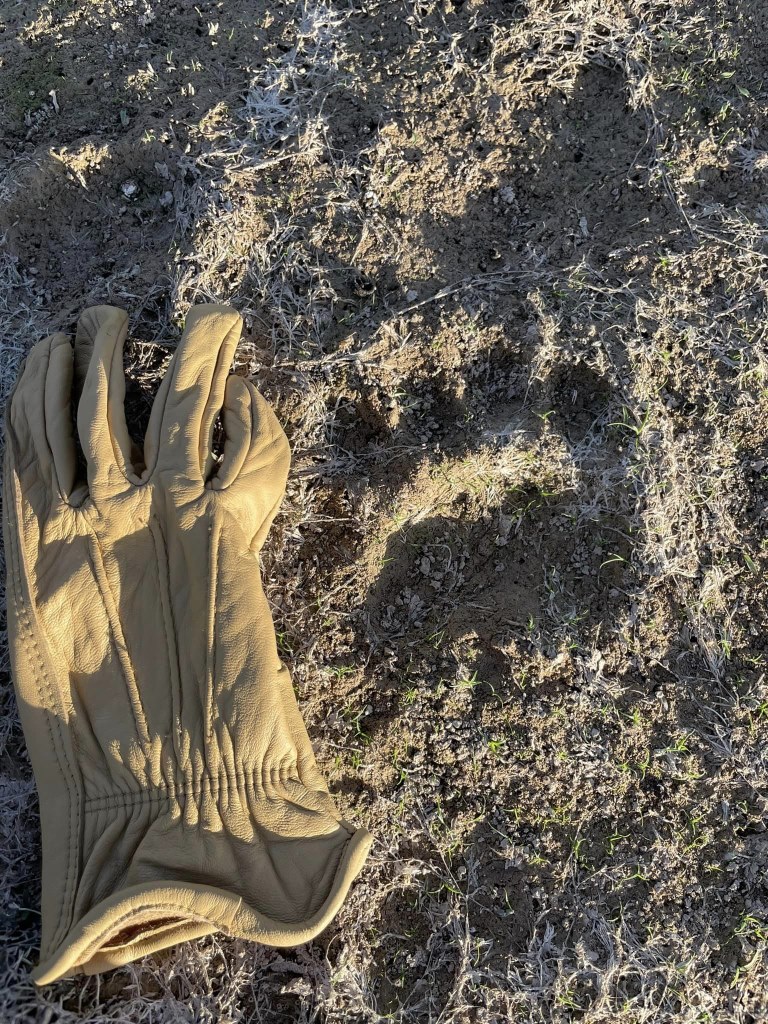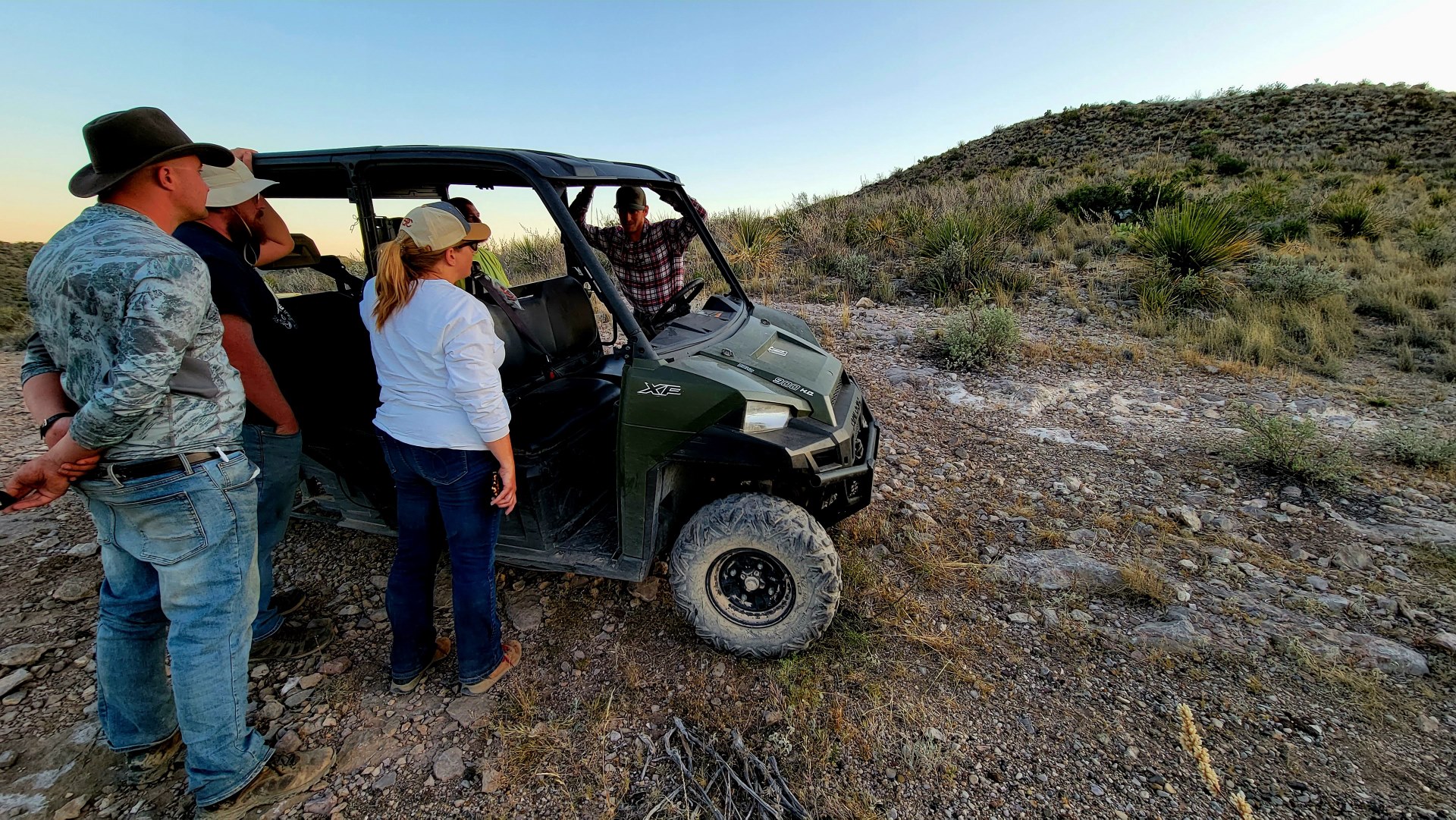South Plains College prides itself on small classes and hands-on learning experiences. It’s no wonder that two lucky students had the opportunity to attend one of the biology department’s annual wildlife trips.
“Every spring we offer the biology 2306 introductory wildlife management course,” said Kristin Bingham, department chair and associate professor of biology. “We have two trips that we take every semester. That means our field collecting trips where students can be introduced into field collecting and how biology happens in the field.”
Bingham said the group went on the second trip to Black Gap Wildlife Management Area, and while they were there another faculty member and a student saw a guy tooling around on a 4x4 ATV/UTV vehicle. The guys talked to him and discovered he was there conducting bear trapping.
The Black Gap Wildlife Management Area borders Big Bend National Park on the northwestern boundary. The area shares 25 miles of the Rio Grande with the Mexican state of Coahuila on the southern and eastern boundaries. The property contains approximately 103,000 acres. The management area serves as a facility where research and demonstration projects can be implemented to aid private land management of natural resources.
“We knew that there was bear research happening in this part of Texas because bears had, in the last decade, started moving into this area from Mexico,” she said.
Bears were once found in this habitat, but they had been extricated and moved out of the region as livestock production had taken hold and other commercial ventures pushed them out of the region. Bingham said in the past 10 to 20 years people began seeing a need for bears in the area since they were native to that area. Now the focus has turned to what could be done to help the bears reestablish if they show up. A little over a decade ago, a mom and some cubs showed up. Slowly this population has been building.
“We knew there were bears in the Trans-Pecos region, but we were just hopeful that one day we might see one and we didn’t see anything,” she said. “We saw bear tracks the first day there, and we took pictures of that.
“We saw bear footprints in the mud by one of the tanks where we were setting bat nets and mammal traps out,” she said. “We knew they were here, and we were going to be careful about how we camp – being bear aware.”
One of her students saw the guy tooling around while the rest of the groups were setting out traps. Bingham introduced herself and discovered his name was Matt Hewitt of Borderlands Research Institute at Sul Ross University, and he was a bear biologist. He told them that he had just released two bears that morning, but if he caught another one, he would come to find them.
About 7 p.m.. that evening, Hewitt received an alert regarding a bear in a trap. He asked the group to accompany him to the location. He said they would do a trap and release, and the students could help. The group jumped on the ATV and headed to the site where they discovered the bear. Hewitt went up to the cage when he realized this was the bear that he had been trying to trap.
Hewitt came back to the group and told them this will not be a catch and release situation. The bear’s tracking collar needed to be refitted. He had to contact two area biologists from Parks and Wildlife to assist with processing the bear. He asked Bingham’s group if they were willing to help.
Hewitt drove the group back to their camp while they waited for the biologists to arrive. One biologist came in from Alpine while the other came from Fort Stockton. At 10:45 p.m.., Hewitt picked up Bingham and her students and took them back to the site. Bingham and her students Shelby R. Wilson of Rising Star and Lance Stephens of Idalou went up to the top of the mountain in the dark to work with the biologists.
The biologists assessed the situation and created a plan. They built a work area on the side of the road that included clearing off rocks and made the area a safe spot for the bear. After setting up their stations, the biologist tranquilized the bear so they could conduct measurements and other readings for their examination. It turns out that this bear had been captured before when he was a much smaller animal. In October, the bear weighed 80 pounds. Now the bear weighed 275 pounds. He was refitted for the collar. They were able to check the animal for scrapes and cuts. They looked for ticks and applied antiseptics to make sure the bear was well taken care of physically.
“Our main job was to provide lighting via flashlights while the biologists conducted all of the tests,” she said. “But we were able to see all the care and professionalism that these guys displayed while doing an excellent job of taking care of the bear.”
The students saw how the bear was removed from the trap after being anesthetized, and then he was placed on a canvas tarp which the students helped move to the work area. The bear slept through the entire episode. Afterwards, they released the bear.
The students’ adventure proved to be a unique experience not found in textbooks.
Photos courtesy of Texas Parks and Wildlife and Kristin Bingham







